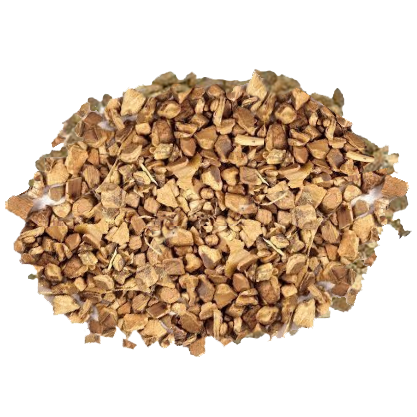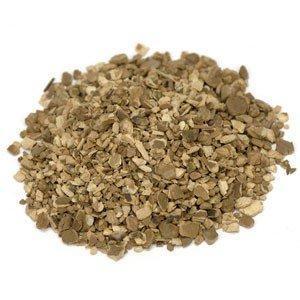- About us
- Consultations
- Herbs & Extracts
- Homeopathy
- Skincare
- Haircare
- Pure Oils
- Flower Remedies
- Raw Materials
- Compounding
- Gerson
- Probiotics
- Devices
- Books
-
Ailments
- Abscesses & Boils
- Aching Muscles
- Acne
- Addictions
- Aging
- AIDS
- Alcoholism
- Altitude Sickness
- Allergies
- Alzheimer's Disease
- Amenorrhea
- Anal Fissures
- Anemia
- Angina
- Arrhythmias
- Arteriosclerosis (High Cholesterol Levels)
- Arthritis
- Asthma
- Athlete's Foot
- Autism
- Back Pain
- Balanitis
- Barber's Itch
- Bedwetting
- Bell's Palsy
- Bad Breath (Halitosis)
- Bites & Stings
- Bladder Irritable
- Blood Poisoning
- Bloating
- Blood Pressure (High)
- Blood Pressure Low
- Body Odour
- Bone Fractures
- Bronchitis
- Bruxism
- Bulemia
- Bunions
- Burns
- Bursitis
- Candidiasis
- Cataracts
- Celiac Disease
- Chickenpox
- Chronic Fatigue
- Circulation
- Colds and Flu
- Colitis
- Conception and Pregnancy
- Congestive Heart Failure
- Ovarian Cysts
- Cough
- Cystitis
- Dandruff
- Cramps Menstrual
- Cramps
- Cholesterol, High
- Dermatitis
- Diabetes
- Diverticular Disease
- Earache
- Endometriosis
- Eczema
- Glue Ear
- Fibroids (Myomas)
- Fibromyalgia
- Gallstones
- Giardiasis
- Glaucoma
- Gum Disease
- Hay Fever
- Hemorrhoids
- Immunity Weak
- Influenza
- Indigestion
- Irritable Bowel Syndrome (IBS)
- Kidney Stones
- Liver Compounds
- Laryngitis ( Hoarseness )
- Leaky gut syndrome
- Lyme Disease
- Lymphedema
- Macular Degeneration
- Mastitis
- Menopause
- Mucus_Chronic
- Osteoporosis
- Traditional treatment of ovarian cysts.
- Peptic Ulcers
- Prostate Problems
- Polyps
- Sinusitis
- Shingles
- Strains and Sprains
- Swollen Ankles
- Tinnitus
- Thyroid, Overactive
- Thyroid, Underactive
- Urinary Tract Infections
- Varicose Veins
- Vitiligo
- Warts
| Mon |
9:00 AM |
- | 5:30 PM |
| Tue |
9:00 AM |
- | 5:30 PM |
| Wed |
9:00 AM |
- | 5:30 PM |
| Thu |
9:00 AM |
- | 7:00 PM |
| Fri |
9:00 AM |
- | 5:30 PM |
| Sat | Closed |
| Sun | Closed |
Newtons Pharmacy Herbs & Extracts Medicinal Teas Prickly Ash Bark
Prickly Ash Bark
(size: 1kg)In stock
Description: Cut Dried Bark of the Prickly Ash Tree, Zanthoxylum americanum.
Traditional use: Historically, many Native American tribes used prickly ash as a medicinal herb. They used an infusion of the bark to treat everything from itchy skin to back pain as well as cramps, fevers, colds, lung conditions, toothaches, sore throats, pain from childbirth, and colic in babies
Eclectic physicians (doctors who recommended herbal medicines) in the United States at the end of the 19th century continued the traditional uses of prickly ash, primarily to treat rheumatic conditions, as a digestive aid, and to strengthen the nervous system, and for cholera. One of them, Charles Millspaugh described the use of prickly ash in his book American Herbal Medicine. In it, he identified prickly ash as a remedy for pneumonia, cholera, typhus, typhoid, and more.
Millspaugh explained in his book, “The action was prompt and permanent... Prickly ash acted like electricity, so sudden and diffusive was its influence over the entire system. I consider the tincture of prickly ash to be superior to any form of medication I know of.”
Active Constituents: Alkaloids, an alkamide that causes a numbing feeling on the tongue and mouth (may be the reason prickly ash was commonly used for toothaches, although there is inconclusive clinical research evidence to show that prickly ash is safe and effective in relieving tooth pain), and volatile oils with warming effect following internal intake or external application.
Today, Prickly ash is commonly used to promote blood flow throughout the body, specifically for the treatment of rheumatism. Rheumatism (including various types of arthritis) is any disease involving pain and swelling or inflammation of the joints, ligaments, and muscles. Prickly ash is said to help improve rheumatism and alleviate joint pain by inhibiting hormones called prostaglandins that stimulate inflammation.
In addition, Prickly ash is said to have numerous other functions and benefits, such as being an appetite tonic, improving digestion and relieving gas, helping bring down high blood pressure and bringing relief in tinnitus, and as an antifungal agent.
Caution: Some people may be allergic to Prickly ash bark. Not recommended to be taken with prescription blood thinners without professional advice. Not recommended for children, or during pregnancy and breast feeding.
Method of Use: Bark Infusion (Decoction).
References:
https://www.verywellhealth.com/the-benefits-of-prickly-ash-4684452
Zhang M, Wang J, Zhu L, et al. Zanthoxylum bungeanum maxim. (Rutaceae): a systematic review of Its traditional uses, botany, phytochemistry, pharmacology, pharmacokinetics, and toxicology. Int J Mol Sci. 2017 Oct;18(10):2172. doi:10.3390/ijms18102172
Ju Y, Still CC, Sacalis JN, Li J, Ho CT. Cytotoxic coumarins and lignans from extracts of the northern prickly ash (Zanthoxylum americanum). Phytother Res. 2001 Aug;15(5):441-3. doi:10.1002/ptr.686
Setzer WN. The phytochemistry of Cherokee aromatic medicinal plants. Medicines. 2018;5(4):121. doi:10.3390/medicines5040121
Millspaugh CF. American Medicinal Plants: An Illustrated and Descriptive Guide to Plants Indigenous to and Naturali. Dover Publication; January 31, 2012
Choudhary M, Kumar V, Malhotra H, Singh S. Medicinal plants with potential anti-arthritic activity. J Intercult Ethnopharmacol. 2015 Apr-Jun;4(2):147-79. doi:10.5455/jice.20150313021918
Bhatta V, Sharmaa S, Kumara N, Sharmaa U, Singha B. Chemical composition of essential oil among seven populations of Zanthoxylum armatum from Himachal Pradesh: chemotypic and seasonal variation. Nat Prod Commun. 2017;12(10):1643-6.
Additional product information
| size | 1kg |
Selection: Prickly Ash Bark
| Product no. | size | Status | Price | |
|---|---|---|---|---|
| Prickly Ash Bark 70g | 70g |
|
$16.30 / pack(s) * |
|
| Prickly Ash Bark 1kg | 1kg |
|
$145.00 / pack(s) * |
|
Accessories
| Product | Note | Status | Price | ||
|---|---|---|---|---|---|
|
From $18.00 / pack(s) * | ||||
|
*
Display accessory details
Inc GST
|
|||||
Browse this category: Dried Herbs & Teas


 Blood Pressure Tea
Blood Pressure Tea